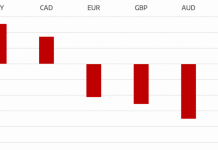Stablecoins are digital currencies that maintain a stable value relative to specific assets. They are popular because they provide a stable store of value and fast transfer of funds, but also pose risks to financial stability and consumer protection, as demonstrated during the SVB crash.

Stablecoins have gained popularity due to their ability to offer users a stable store of value and a means of transferring funds quickly and easily. Additionally, they provide opportunities for businesses and individuals to participate in global transactions without the restrictions of traditional banking systems. As technology continues to evolve, stablecoins could become an important tool for businesses and individuals to manage their finances and access new markets.
However, regulators have warned that stablecoins could pose risks to financial stability, particularly if they are not backed by adequate reserves of the underlying assets. This was highlighted by the recent collapse of Silicon Valley Bank (SVB), which Circle, a leading financial technology company, survived by shifting $3.3 billion of cash out of the struggling bank. Circle has since advocated for its USDC stablecoin to be backed by the U.S. Federal Reserve with its U.S. dollars held at the Fed, in order to ensure that it has access to risk-free cash.
Stablecoins’ Potential Use in Illegal Activities
Regulators are also concerned about the potential for stablecoins to be used for illegal activities, such as money laundering and terrorist financing. The anonymity and ease of use offered by stablecoins could make them an attractive option for criminals looking to move funds across borders quickly and easily.
For instance, in 2020, the US Department of Justice charged the founders of the BitMEX exchange with facilitating money laundering by enabling traders to remain anonymous while trading billions of dollars in cryptocurrencies. Another example is the use of Tether (USDT), a popular stablecoin, in criminal activities such as online gambling and drug trafficking, as revealed in several investigations.
How regulators are mitigating the risks associated with stablecoins?
In response to these concerns, regulators are exploring ways to regulate stablecoins more effectively. In the United States, the Treasury Department’s Office of the Comptroller of the Currency (OCC) has proposed a rule that would require stablecoin issuers to obtain a national bank charter and be subject to the same regulations as traditional banks. The OCC has also indicated that it is exploring the possibility of a federal charter for stablecoin issuers.
In addition, the Financial Stability Oversight Council (FSOC), which is responsible for identifying and monitoring risks to the financial system, has identified stablecoins as a potential risk to financial stability and has called for increased regulatory oversight of the industry.
Balancing volatility and stability
Despite these concerns, the use of stablecoins continues to grow, with many investors seeing them as a safe haven asset in times of market volatility. However, as regulators continue to explore ways to mitigate the risks associated with stablecoins, it remains to be seen how the industry will evolve in the coming years.
Tradersdna is a leading digital and social media platform for traders and investors. Tradersdna offers premiere resources for trading and investing education, digital resources for personal finance, market analysis and free trading guides. More about TradersDNA Features: What Does It Take to Become an Aggressive Trader? | Everything You Need to Know About White Label Trading Software | Advantages of Automated Forex Trading













































